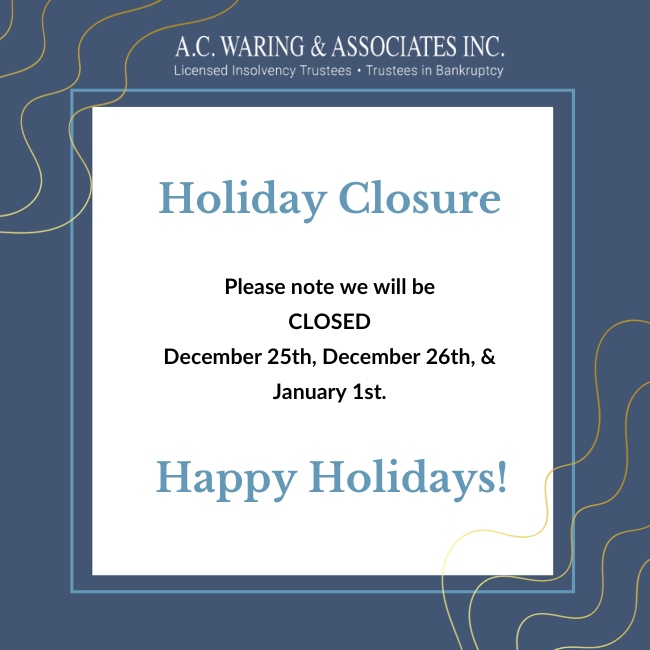Alberta’s financial future is changing.
While many people in our province found themselves out of a job once the pandemic hit, the Canadian government responded with a flood of different benefit programs designed to help lower-income workers keep their heads above water. Insolvencies decreased across the country during the pandemic partly due to government financial support. However, insolvencies are starting to rise again as people return to ‘normal’ pre-pandemic spending.
When federal benefits terminate it may be more difficult for some people to manage their debts after the assistance ends. If you’re one of the millions of people in the country struggling from pay cheque to pay cheque, you might consider availing yourself of protection under the Bankruptcy and Insolvency Act.
Myth #1: Benefit Programs can Help You Get Out of Debt
There are several programs the Canadian government developed when workplaces went on lockdown last year, with the CERB and CRB being the most common.
In most cases, the government provided $2,000 a month for those accepted into the program, which was just barely enough to cover essential living expenses, depending on your personal obligations. If you were able to save some of the CERB or CRB benefit, you might have been able to reduce some of your debt. However, this may have been unlikely.
The Alberta economy is not yet fully recovered from the collapse of 2017and while federal benefit programs and deferrals are coming to an end it is very likely that Albertans will still have trouble recovering from these hard times and economic set-backs.
Myth #2: Bankruptcy is an “Easy Way Out”
One of the most common misconceptions people have about bankruptcy is that it will eliminate all debt, no matter from where or how it was accumulated. There are, however, several types of debts for which you may still be liable even after you are discharged from bankruptcy.
These debts can include:
- Student loan debt where you have not been out of school for at least 7 years
- Court-ordered fines and penalties
- Alimony and child support payments
- Debts accumulated through fraud, embezzlement, or misrepresentation
- Secured debts wherein you want to retain collateral
Myth #3: You Can’t Borrow After Claiming Bankruptcy
The filing of bankruptcy brings about a “stay of proceedings” relative to your unsecured creditors. During this time, your creditors will, in all likelihood, not contact you or attempt to collect on your debts or proceed with garnishment. When you receive your discharge from bankruptcy, in 9 to 21 months, your debts will be extinguished and you can start over.
While it’s common to think you will be unable to borrow money after bankruptcy, this may not be the case. Bankruptcy is designed to help give people a fresh start, however, it may be more difficult to find creditors willing to grant an unsecured line of credit. When you are approved for credit you can slowly build up your credit worthiness over time.

Myth #4: Bankruptcy Will Cause the Forfeiture of Your Assets
Another common misconception about bankruptcy is that it will result in the loss of your assets as well as having to pay back all your creditors. Actually, what you may keep is more or less up to provincial law relative to exemptions. Essentially you will not be left without your basic needs. These needs can include:
- Food
- Clothes
- Health aids
- Tools of the trade
- Some portion of home equity
- RRSPs and pension plans
In some cases, you may also be able to keep your home after bankruptcy. This rule varies from province to province but is ultimately determined by how much equity you have in your home.
If your home has equity in excess of the provincial exemption laws, you may have to pay some of that excess into your bankrupt estate before you are eligible for a discharge. With this arrangement the outcome of having the house sold is usually avoided. However, if your equity does not exceed the provincial exemption amount and provided you can make your mortgage, property tax and home insurance payments, you will likely be able to retain your home.
If you can’t pay your mortgage and/or condominium fees, it might be a better option to attempt to sell the house before the mortgage company commences foreclosure.
Fact: Debt Resolution is Your Best Hope
If you’re still struggling with your debts even after coming out of the pandemic, our Licensed Insolvency Trustees and Administrators are available to assist you. We can help you prioritize your debts, consider your best options, discuss the alternatives and create a plan with you to resolve your situation.




